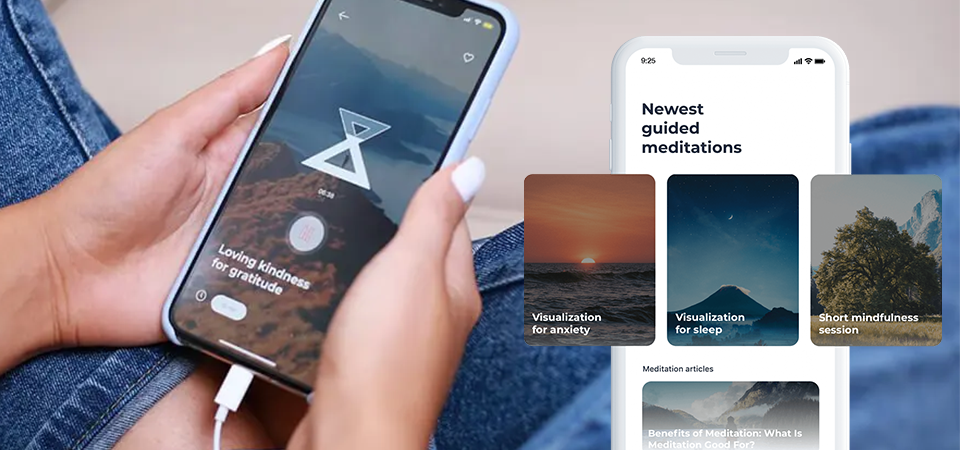Living with chronic pain has taught me that managing it effectively requires more than just medical treatment—it demands a comprehensive toolkit of resources, apps, and strategies. The best tools for managing chronic pain combine evidence-based approaches with practical, everyday usability to help you regain control over your daily life. After years of exploring different options and speaking with others in similar situations, I've discovered that the most effective pain management happens when you have multiple tools working together, each addressing different aspects of the chronic pain experience.
Declutter The Mind

One of the most powerful tools I've found for chronic pain management is meditation, particularly through dedicated apps that understand the unique challenges of living with persistent pain. Declutter The Mind stands out as my top recommendation because it offers specific guided meditations for pain that don't just tell you to "breathe through it" but actually provide practical techniques for changing your relationship with discomfort.
What I appreciate most about Declutter The Mind is how it approaches pain management holistically. The app includes sessions focused on acceptance, which has been crucial in my own journey. Rather than fighting against pain, these meditations teach you how to observe sensations without adding the extra layer of emotional suffering that often makes chronic pain worse.
Key Features That Make a Difference
The meditation timer function allows you to customize sessions based on your energy levels—some days you might only manage five minutes, while others you can commit to longer practices. The guided meditations specifically address the mental health challenges that often accompany chronic pain, including sessions for depression and anxiety.
Pain Tracking and Symptom Management Tools
Effective chronic pain management requires understanding your patterns, triggers, and what actually helps. Digital pain tracking tools have revolutionized how we can monitor and communicate about our symptoms with healthcare providers.
A good pain tracking app should allow you to log not just pain levels, but also mood, sleep quality, activities, weather, and medications. Look for tools that generate reports you can share with your doctor—this data becomes invaluable during appointments when you're trying to explain how your pain fluctuates over time.
What to Track Beyond Pain Levels
The most helpful tracking goes beyond the simple 1-10 pain scale. Document your sleep patterns, as poor sleep often intensifies chronic pain. Track your activity levels—both physical movement and mental engagement. Note emotional states, because chronic pain and mental health are deeply interconnected. Weather sensitivity is real for many chronic pain sufferers, so including environmental factors can reveal important patterns.
Physical Therapy and Movement Apps
Movement might seem counterintuitive when you're in pain, but gentle, appropriate exercise often provides significant relief. Physical therapy apps designed for chronic pain conditions offer guided exercises you can do at home, adapting to your current pain levels and mobility.
The best movement apps for chronic pain understand that some days you can barely get out of bed, while other days you might feel capable of more activity. They should offer modifications for different ability levels and never push you beyond what feels safe for your body.
Building a Sustainable Movement Practice
Start incredibly small—even five minutes of gentle stretching can make a difference. Focus on consistency over intensity. Many people with chronic pain make the mistake of overdoing it on good days, which can lead to flares. A good app will help you pace yourself and build sustainable habits rather than encouraging boom-bust cycles.
Sleep and Relaxation Tools
Sleep disturbances and chronic pain create a vicious cycle—pain makes it hard to sleep, and poor sleep makes pain worse. Sleep-focused tools become essential parts of your pain management toolkit.
Look for apps that offer sleep meditations, progressive muscle relaxation, and ambient sounds designed to mask the hypervigilance that often comes with chronic pain. Some people find that body scan meditations help them relax into sleep by systematically releasing tension.
Creating a Pain-Friendly Sleep Environment
Beyond apps, consider tools that help optimize your sleep environment. White noise machines can mask sounds that might trigger pain-related anxiety. Sleep tracking can help you identify patterns between sleep quality and pain levels. Some apps offer gentle wake-up features that work with your natural sleep cycles rather than jarring you awake during deep sleep.
Community and Support Platforms
Chronic pain can be incredibly isolating, especially when others don't understand what you're experiencing. Online communities and support platforms provide connection with people who truly get it.
The most valuable support platforms offer both peer connection and access to professional resources. Look for communities that maintain positive, solution-focused environments while still acknowledging the real challenges of chronic pain.
Finding the Right Community Balance
Be selective about which communities you engage with regularly. Some online spaces can become echo chambers of suffering that actually increase your pain focus. The healthiest communities balance validation of struggles with sharing of coping strategies and success stories. They should feel supportive rather than competitive about who has it worse.
Integration and Building Your Personal Toolkit
The most effective approach to chronic pain management combines multiple tools rather than relying on any single solution. Your toolkit might include a meditation app like Declutter The Mind for daily mindfulness practice, a pain tracking app for monitoring patterns, a movement app for gentle exercise, and a sleep app for better rest.
Start with one tool and give it at least a few weeks before adding another. This allows you to properly evaluate each tool's effectiveness and avoid overwhelming yourself with too many new approaches at once. Remember that what works best for you might be different from what works for others—chronic pain is highly individual.
The goal isn't to eliminate pain entirely, but to develop a comprehensive approach that helps you live more fully despite chronic pain. With the right combination of tools, many people find they can reduce their pain levels, improve their quality of life, and regain a sense of control over their daily experience. The key is patience, consistency, and willingness to adapt your approach as you learn what serves you best.







